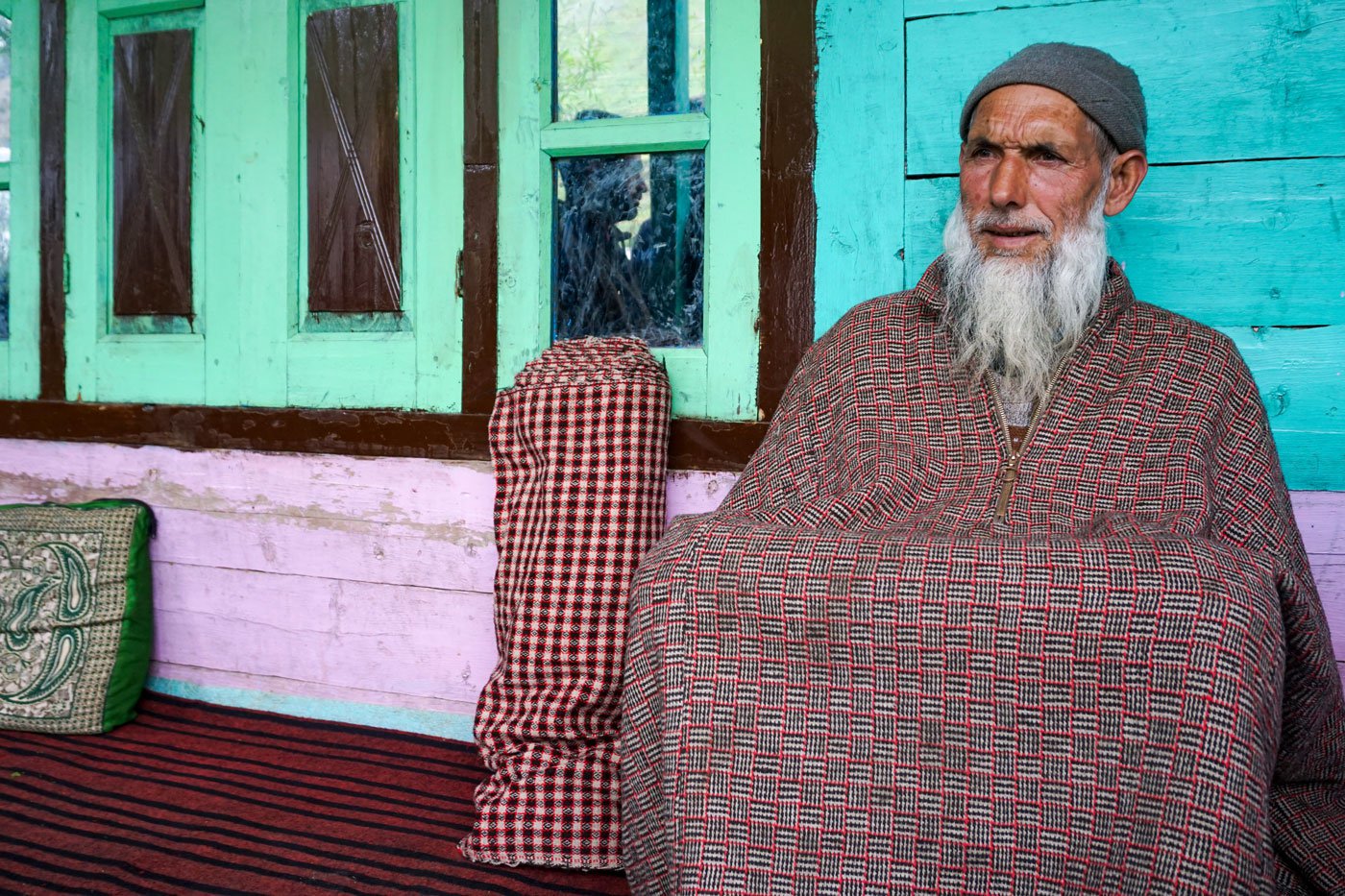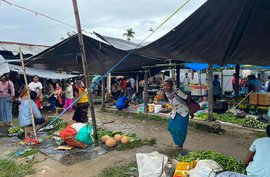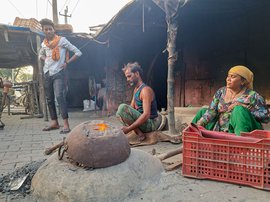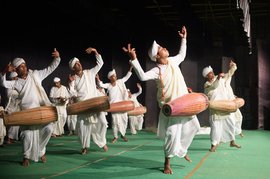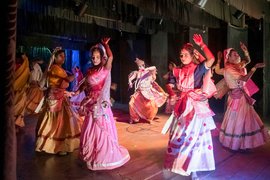It has been 30 years since Abdul Kumar Magray last wove pattu . He is among the last weavers of this woollen fabric known to stand up to Kashmir’s harsh winters when temperatures drop to below -20 degrees Celsius.
“I used to weave 11 metres in a single day,” recalls the 82-year-old who has lost most of his sight. Making his way carefully across the room, he places a hand on the wall to guide him. “When I was around 50, my eyesight weakened due to excessive weaving.”
Abdul lives within view of the Habba Khatoon peak in Dawar, a village in Bandipore district with a population of 4,253 people (Census 2011). He tells us that now there are no active pattu artisans but, “until almost a decade ago, in the winter months, every household in the village would weave garments for sale in spring and summer.”
Some of the garments Abdul and his family would make for sale in Srinagar and even other states included pheran (a traditional gown-like upper garment), dupathi (blanket), socks and gloves.
But despite Abdul’s love for his craft, sustaining it today is not easy as the raw material – wool, is no longer readily available. Weavers like Abdul used to keep sheep and get the wool to weave pattu from the animals they raised. Around 20 years ago, he says, sourcing wool was easy and cheap since his family owned around 40 t0 45 sheep. “We used to make a good profit,” he recalls. Currently, the family owns only six sheep.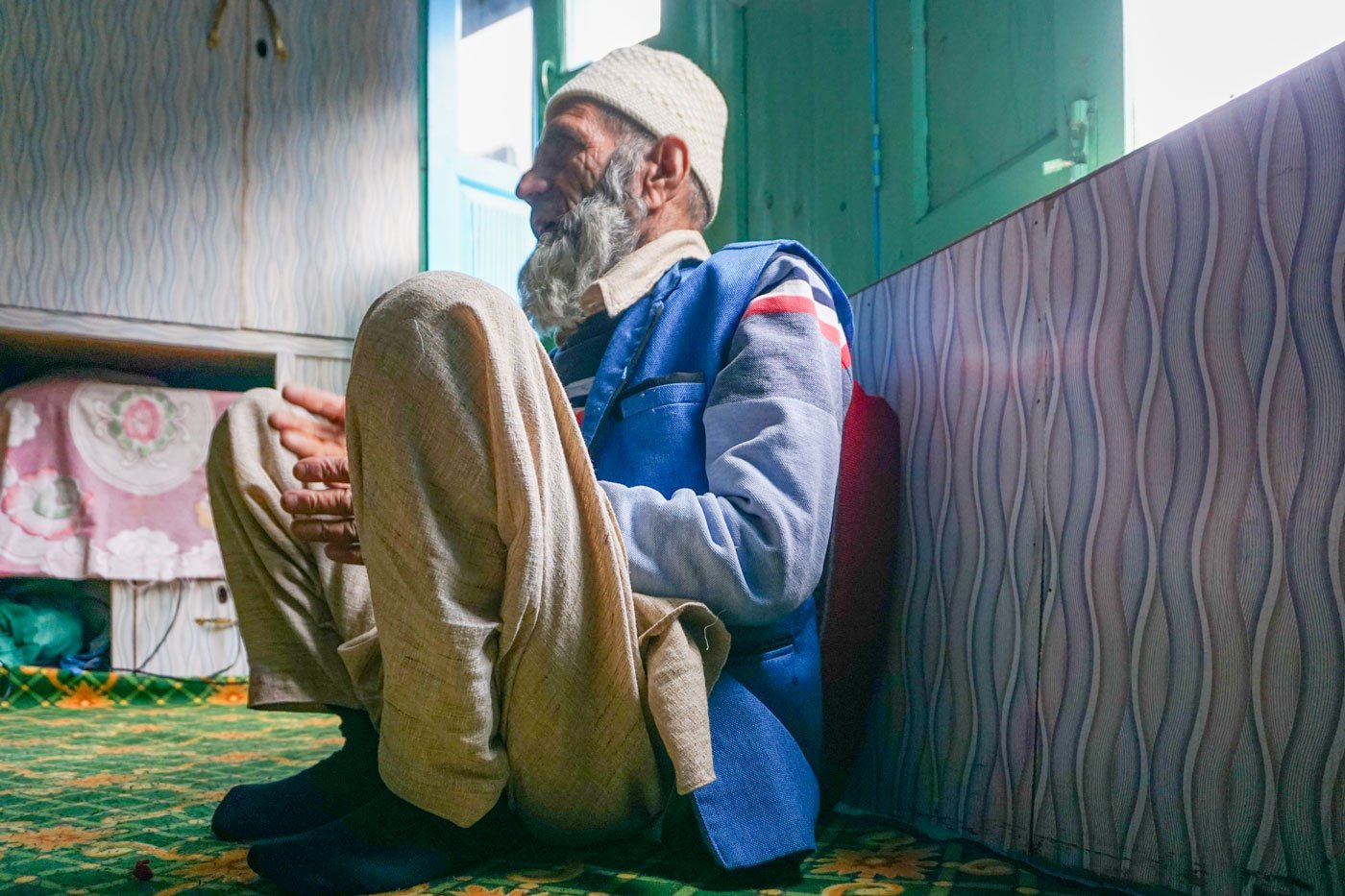
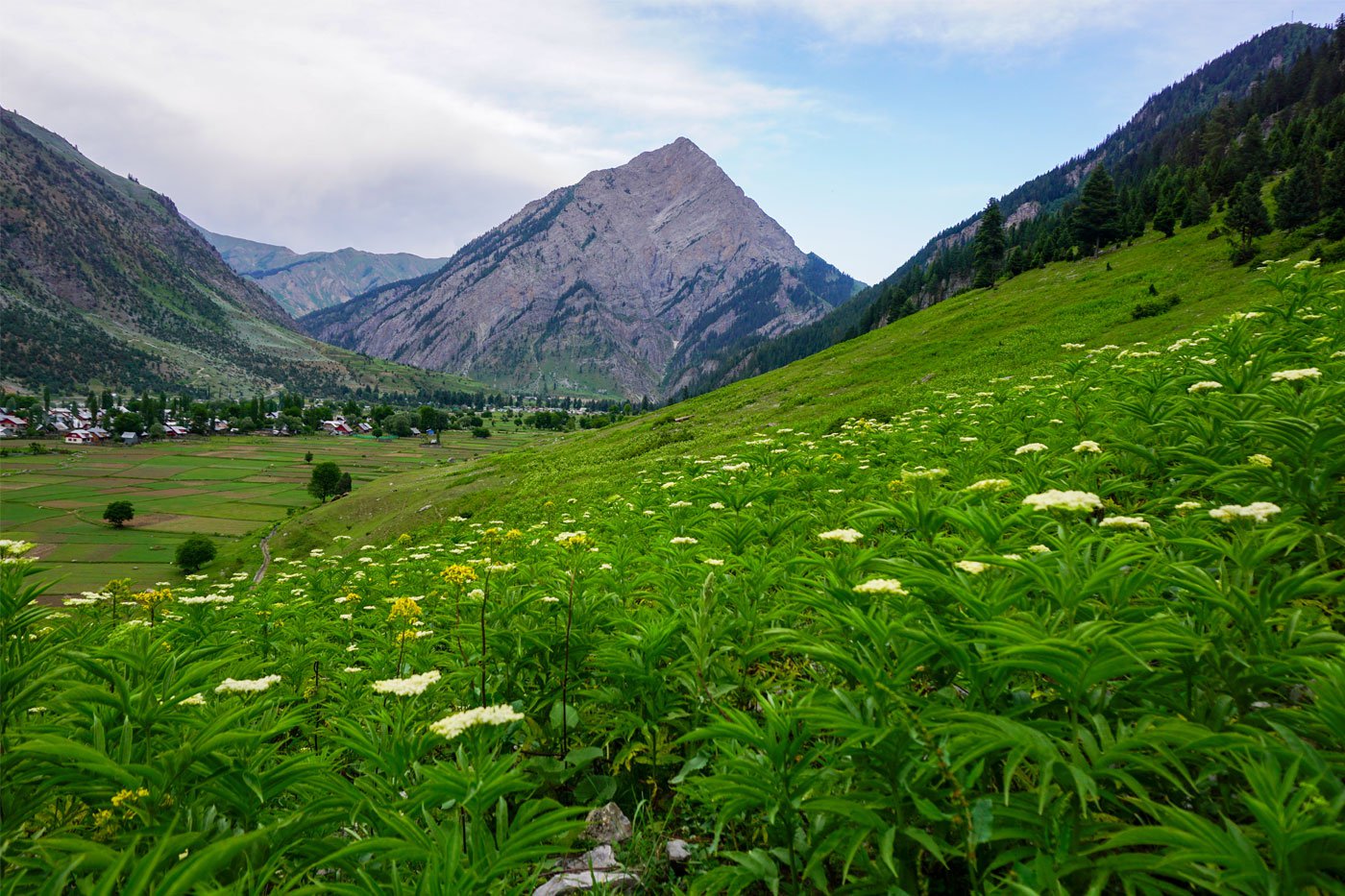
Left: Abdul Kumar Magray at his home in Dawar Right: Dawar village is situated within view of the Habba Khatoon peak in the Gurez valley
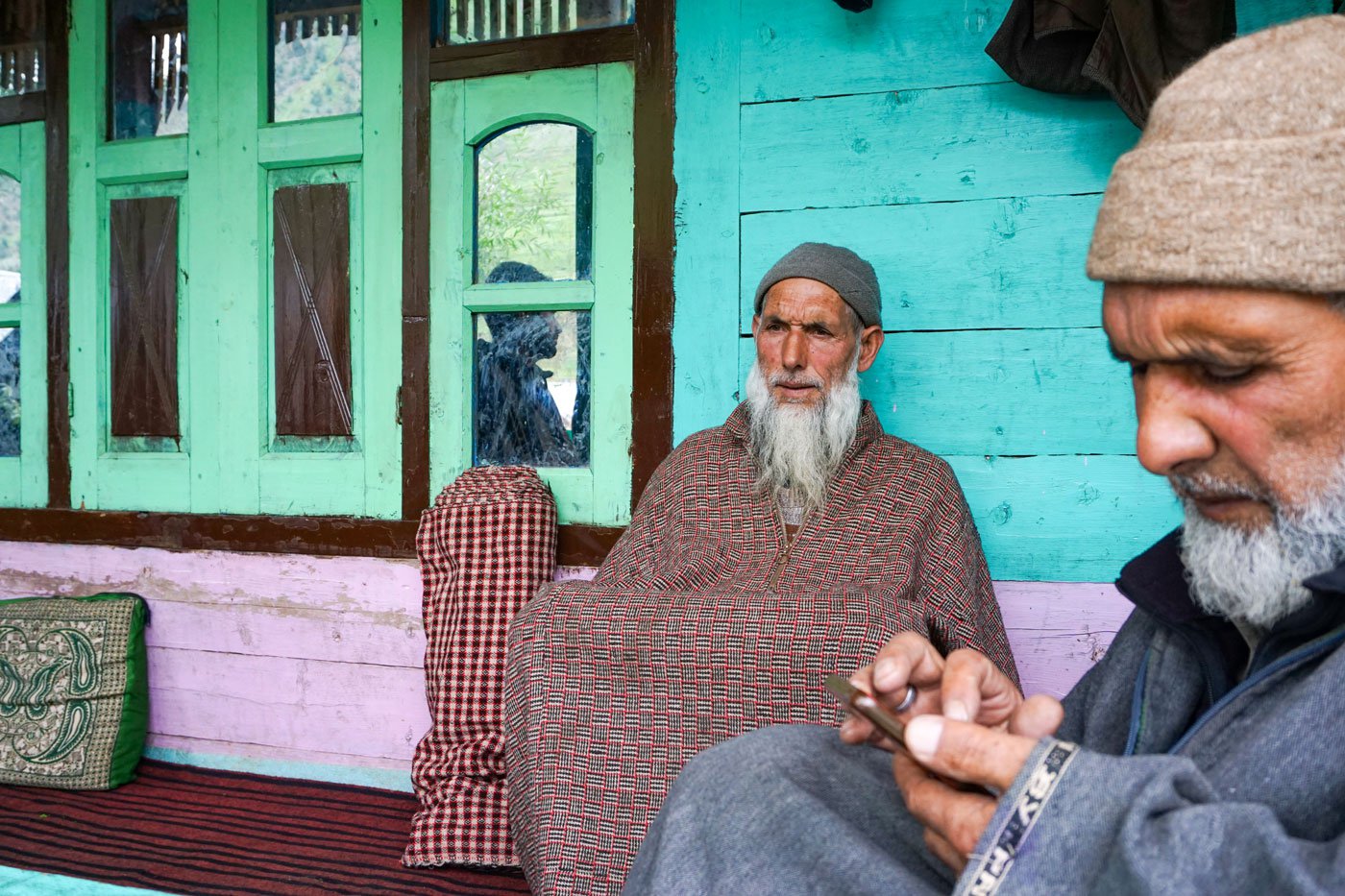
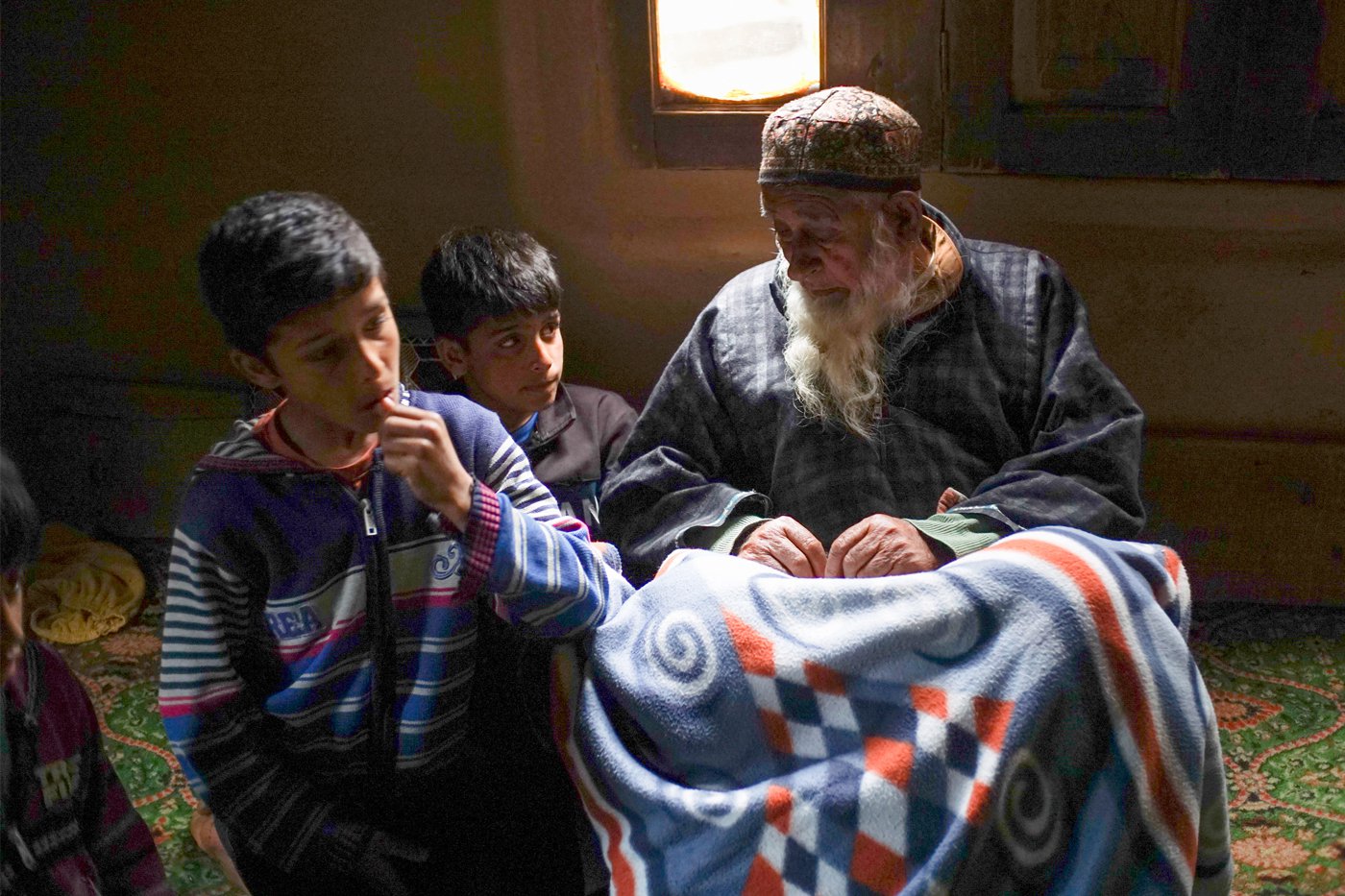
Left: Sibling duo Ghulam and Abdul Qadir Lone are among the very few active weavers in Achura Chowrwan village. Right: Habibullah Sheikh, pattu artisan from Dangi Thal, at home with his grandsons
Habibullah Sheikh and his family, from Dangi Thal village of the Tulail valley in Bandipore district, left the pattu business about a decade ago. He says, “Earlier there was a culture of keeping sheep. Each household used to have at least 15-20 sheep that lived with the family – on the ground floor.”
But that has changed, points out 70-year-old Ghulam Qadir Lone, one of the few active weavers from the village Achura Chowrwan (also known as Shah Pora), also in Bandipora district. “The climate in Gurez has changed over the last decade. Winters have become very harsh. This has affected the growth of grass which is the primary fodder for sheep. People have given up rearing large flocks.”*****
Abdul Kumar was around 25 when he first started weaving pattu . “I used to help my father, and mastered the craft over time,” he says. The art has been passed down in his family for generations, but none of his three sons have taken it up. “ Pattu mai aaj bhi utni hi mehnat hai jitni pehle thi, magar ab munafa na hone ke barabar hai [ Pattu requires the same amount of effort it did before, but the profits are next to nothing],” he explains.
When Abdul initially began weaving, a metre of pattu fabric sold for Rs. 100. With time, the rates have only increased. These days, a metre is priced at around Rs. 7,000. But despite the high prices of the finished product, the profits for the weavers have become negligible as the yearly costs of rearing sheep are consistently higher than annual sales of pattu.
“Weaving pattu is an art of precision. A wrong placement of even a single thread can mess up the whole piece. One has to begin afresh,” says Abdul. “[But] the hard work is worth it because the warmth of the fabric is incomparable in a cold region like Gurez.”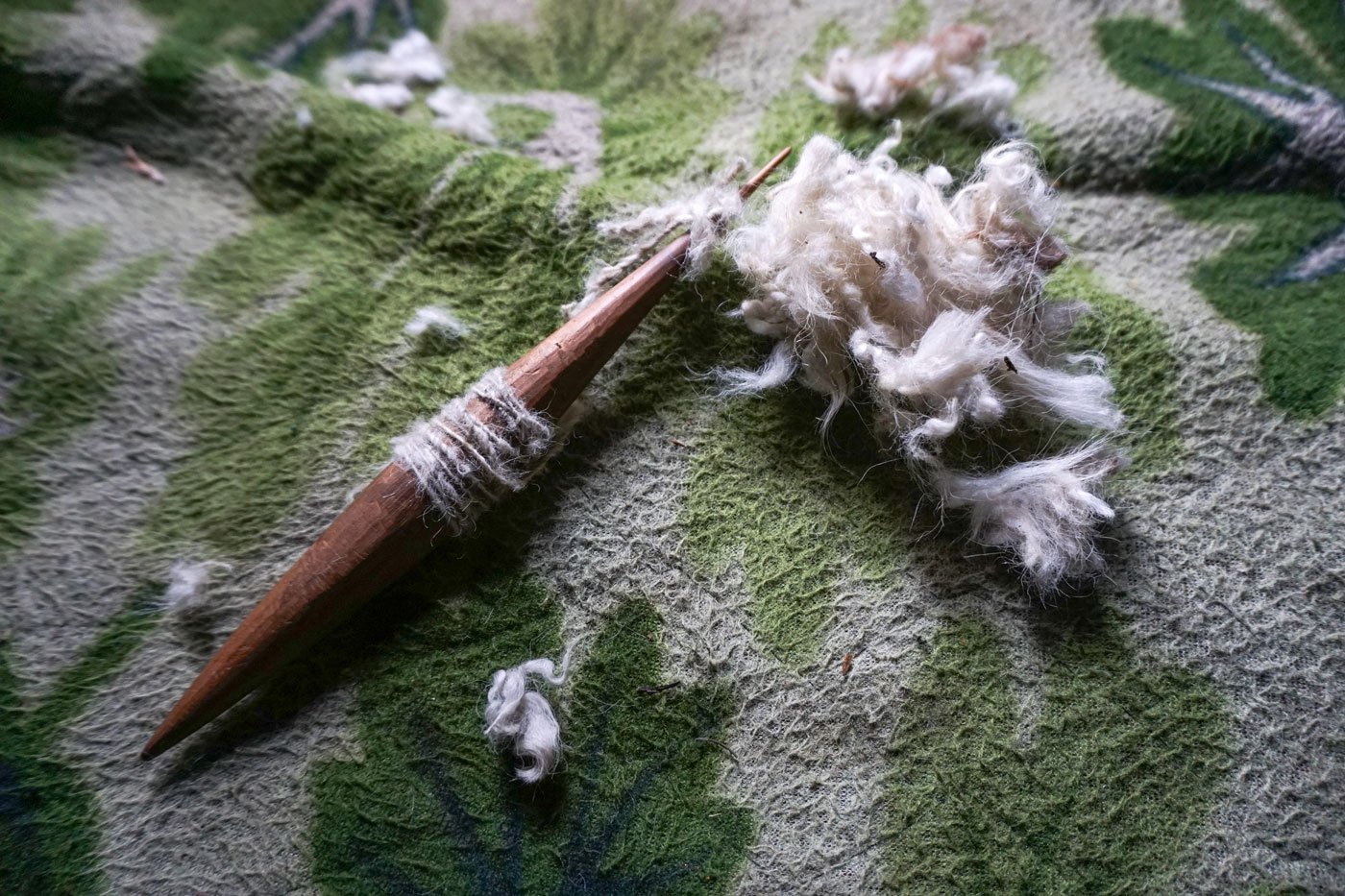
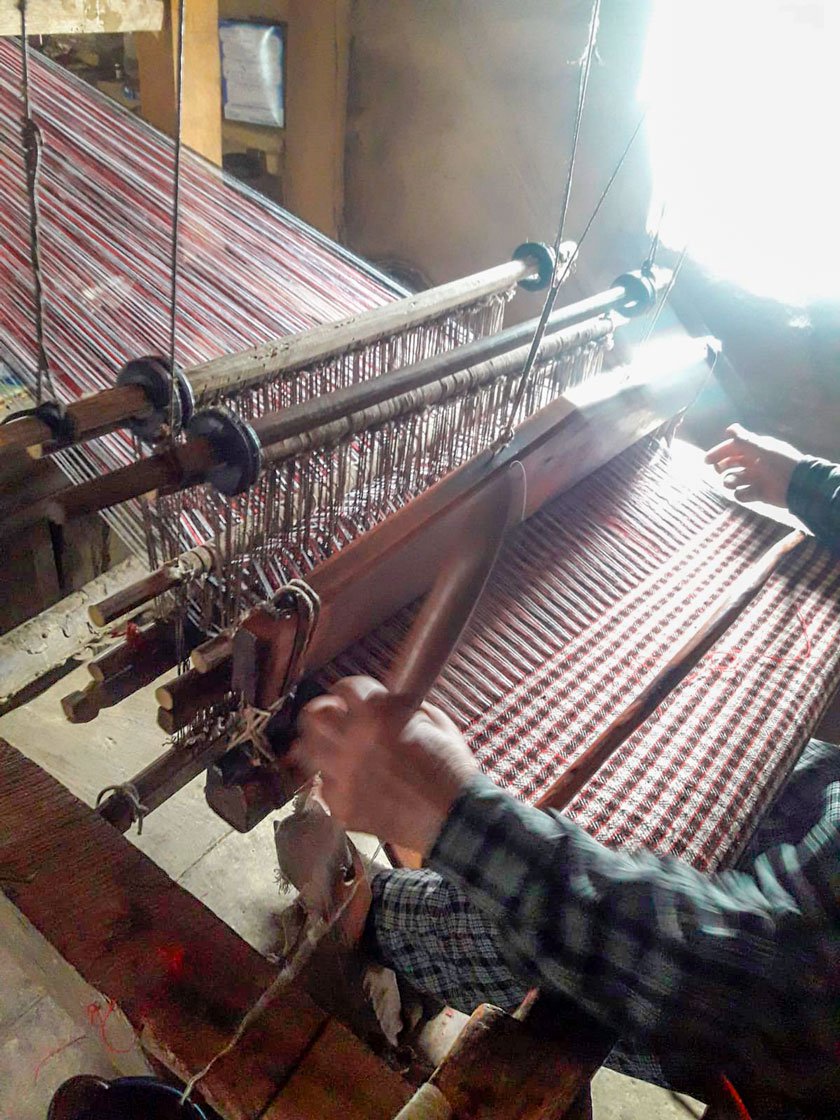
A wooden spindle (chakku) and a hand-operated loom (waan) are two essential instruments for pattu artisans
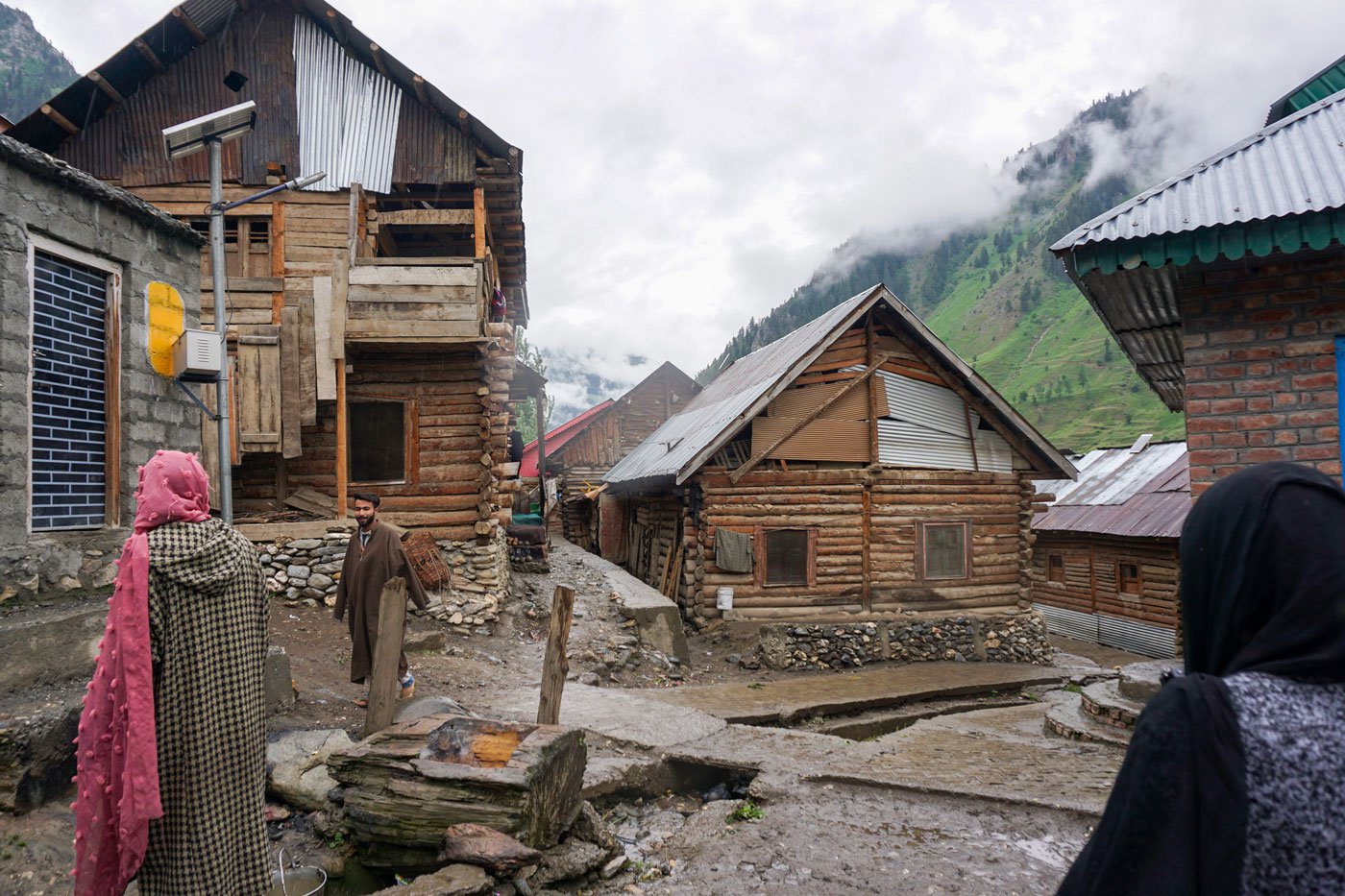
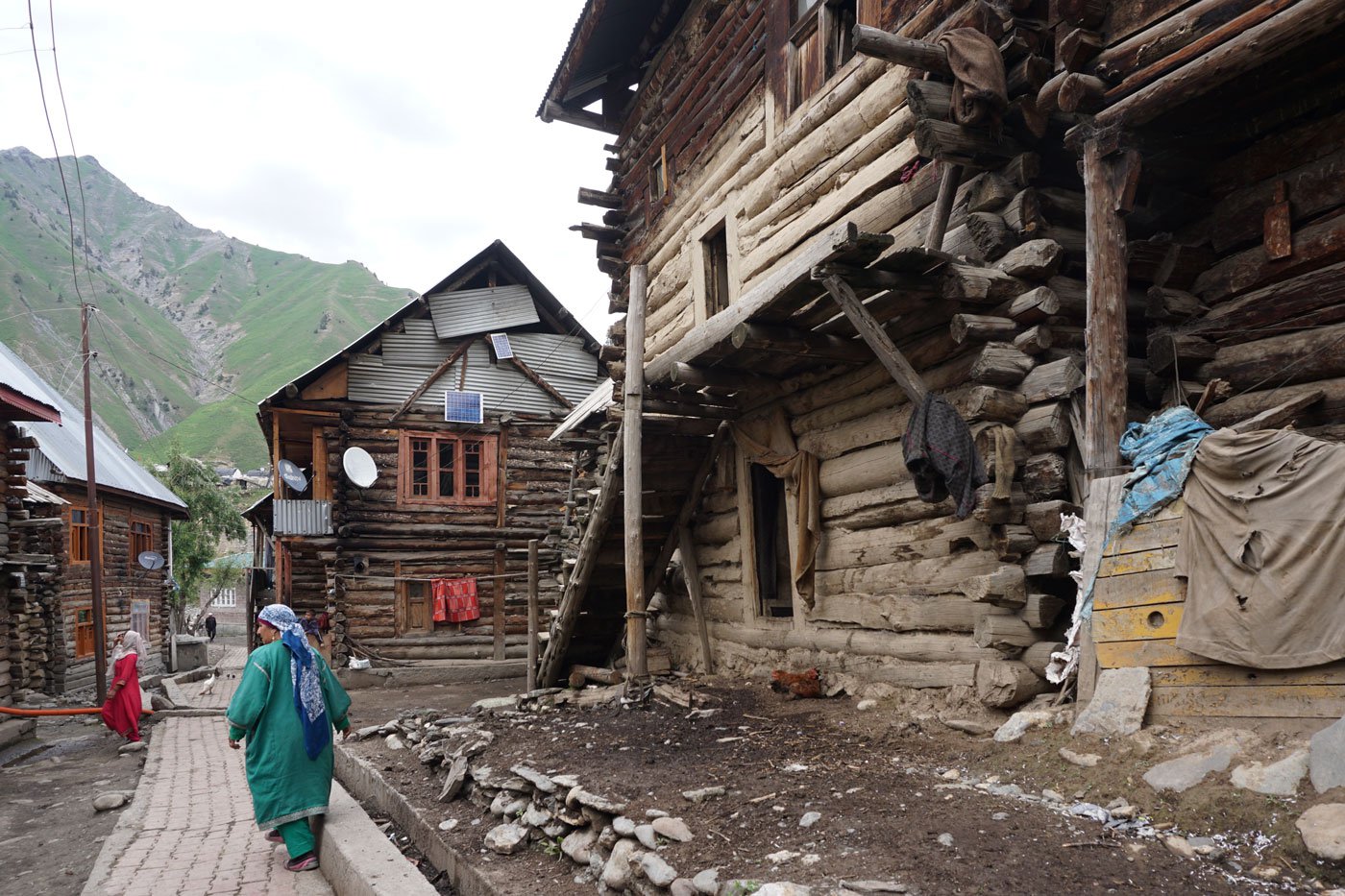
The villages of Achura Chowrwan (left) and Baduab (right) in Kashmir’s Gurez valley. Clothes made from the woolen pattu fabric are known to stand the harsh winters experienced here
Artisans use a chakku , a wooden spindle roughly the size of a person’s hand, to transform the wool into yarn. The chakku is dowel-shaped with both ends tapering into points. The yarn thus spun is woven into cloth on a loom – known locally as waan.
Making a pattu fabric is never a one-person job. Often the entire family contributes to the process. Generally, the men are in charge of obtaining the wool from the sheep while the women spin the wool into yarn. “They do the toughest part, besides managing household chores,” points out Anwar Lone. Working the loom or waan was usually a task undertaken by the men in the family.
The 85-year-old Zooni Begum belongs to the Dard-Shin community and is among the few women in the valley who can weave pattu. “It is the only craft I know,” she says, speaking in the local Shina language. Her son Istiyaq Lone, a 36-year-old farmer, translates for us.
“The trade in pattu has stopped now but I still make a few items like khoyeeh [a traditional headgear for women] every few months.” With her grandson in her lap, Zooni demonstrates the process of spinning sheep wool – called pashh in the Shina language – into yarn using a chakku. “I inherited this art from my mother. I love the entire process of it,” she says. “I want to continue doing it as long as my hands are able.”
Pattu weavers in the Gurez valley belong to the Dard-Shin (also known as Dard) community, listed as a Scheduled Tribe in Jammu and Kashmir. Divided across the Line of Control that runs almost parallel to the valley, the community shares the tradition of pattu and regrets its decline caused by falling demand, a lack of state support and migration.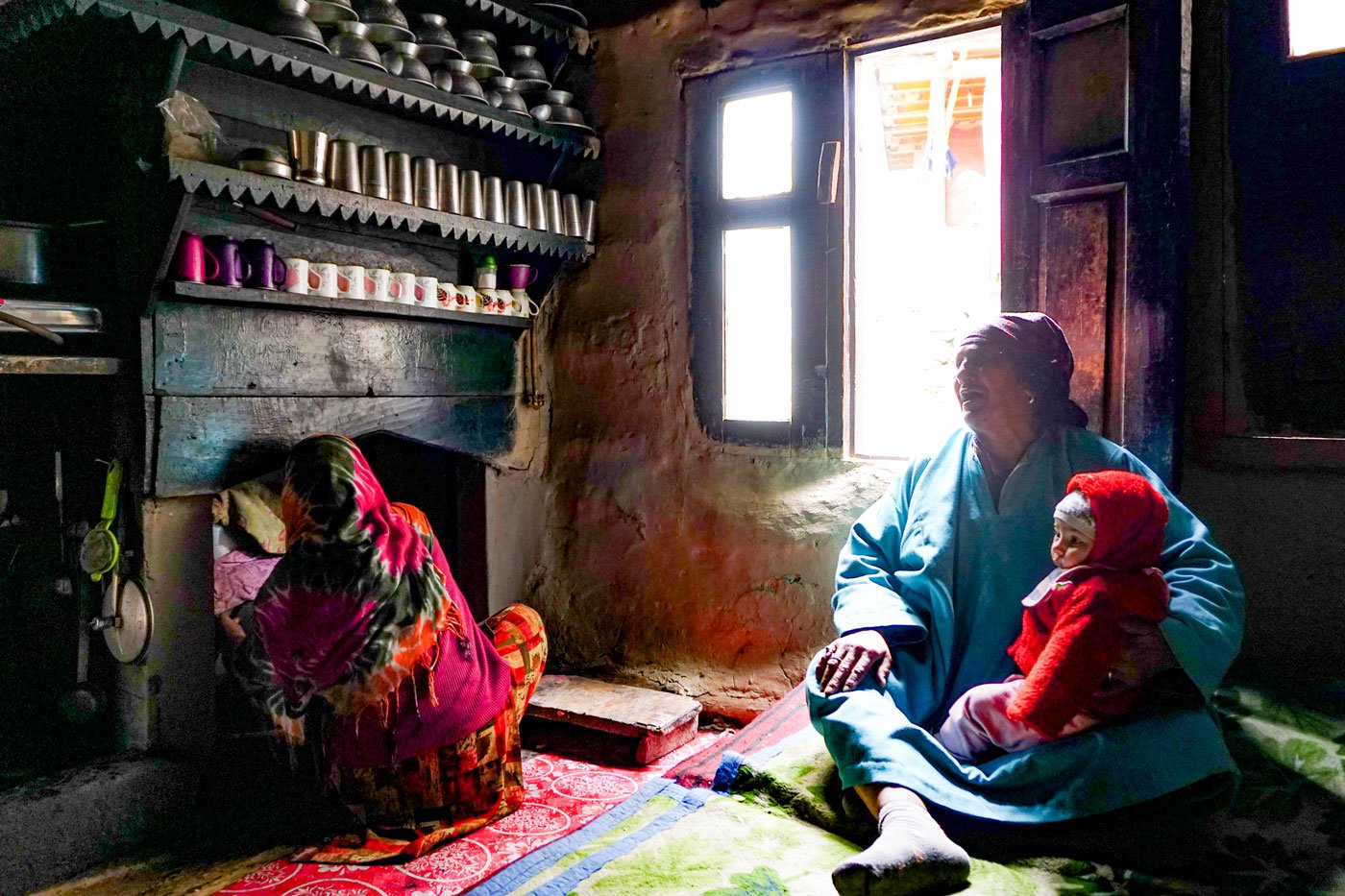
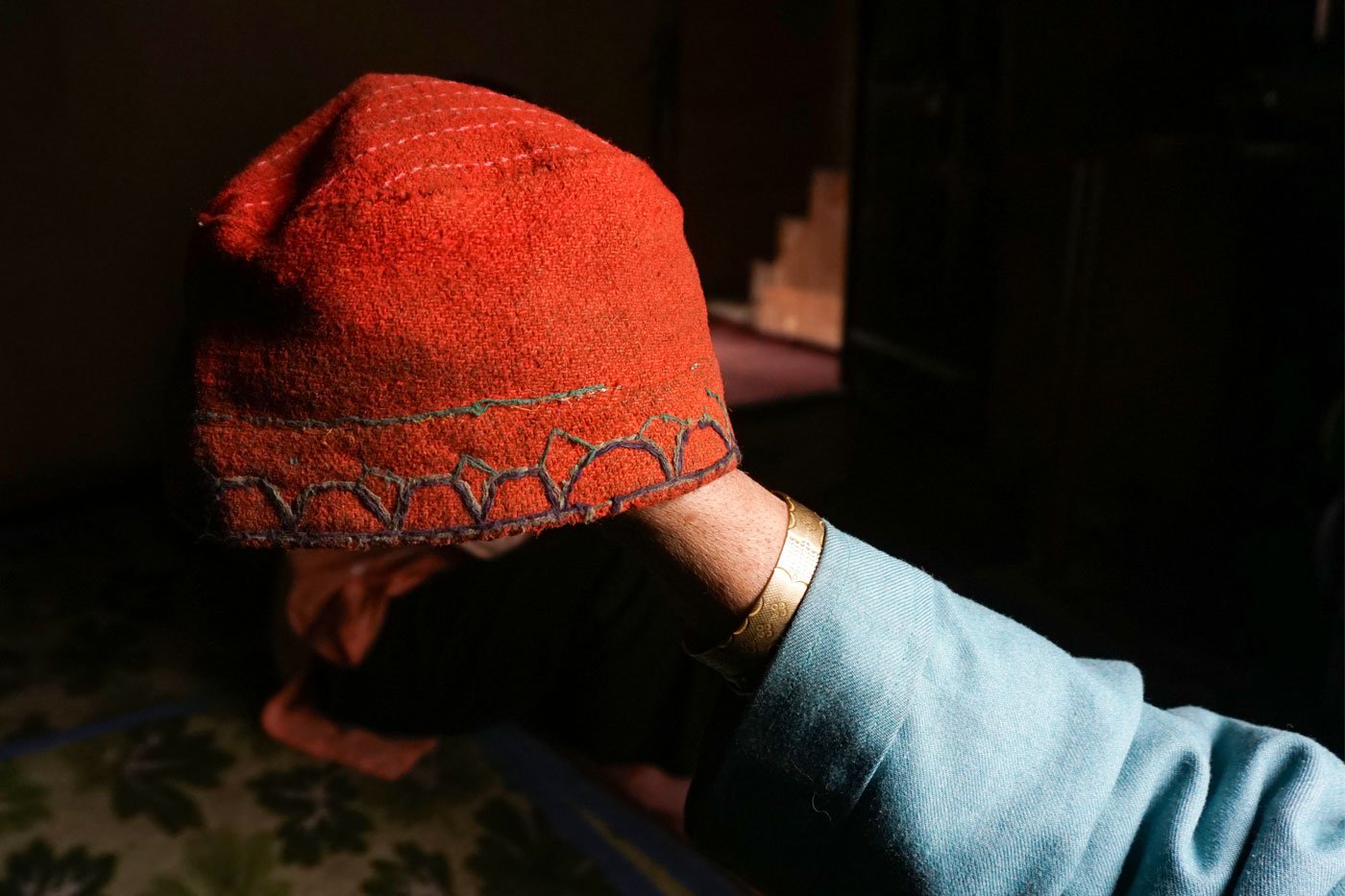
Left: Zooni Begum with her grandson at her home in Baduab. Right. She shows us a khoyeeh, a traditional headgear for women, made by her
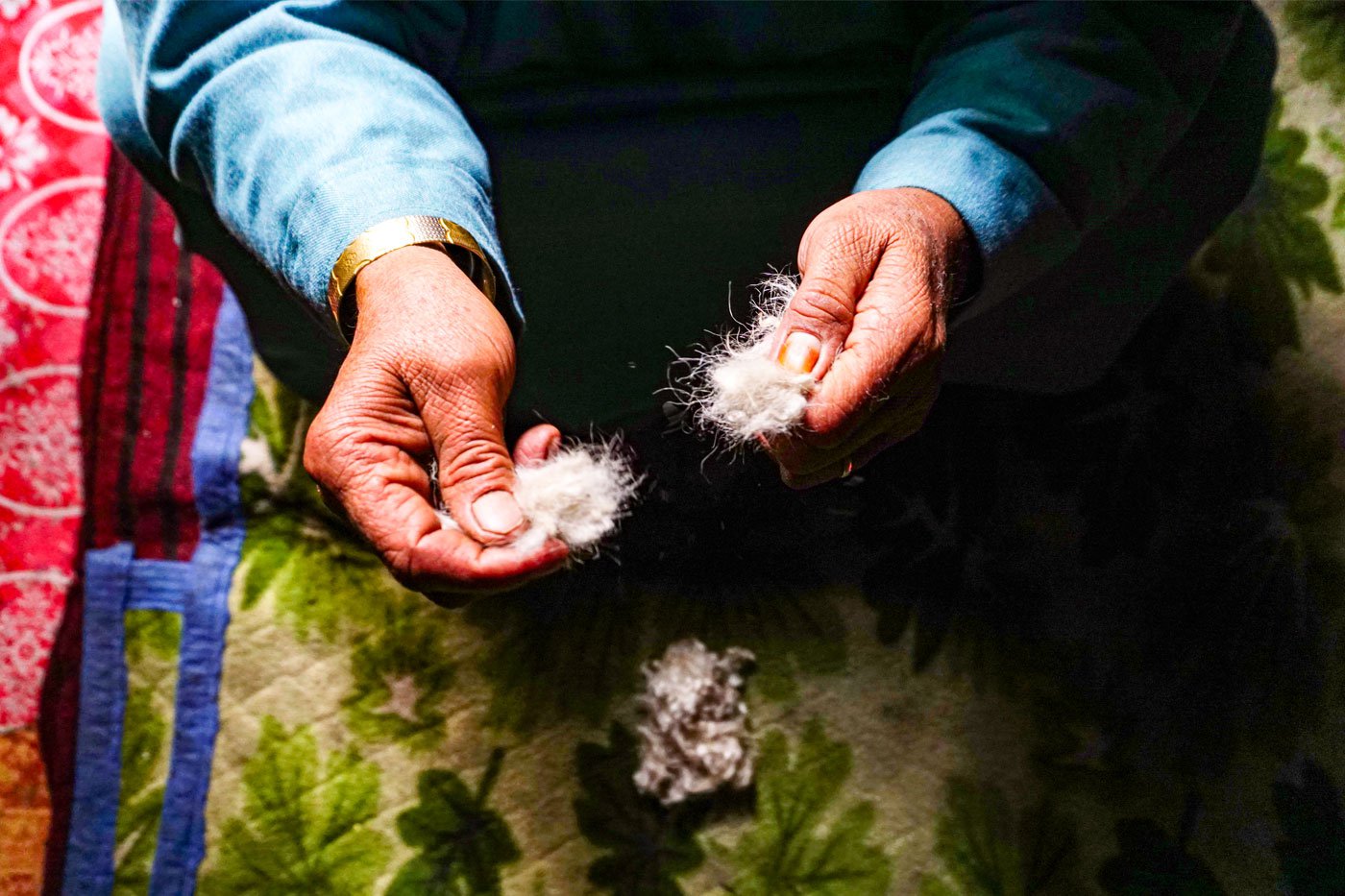
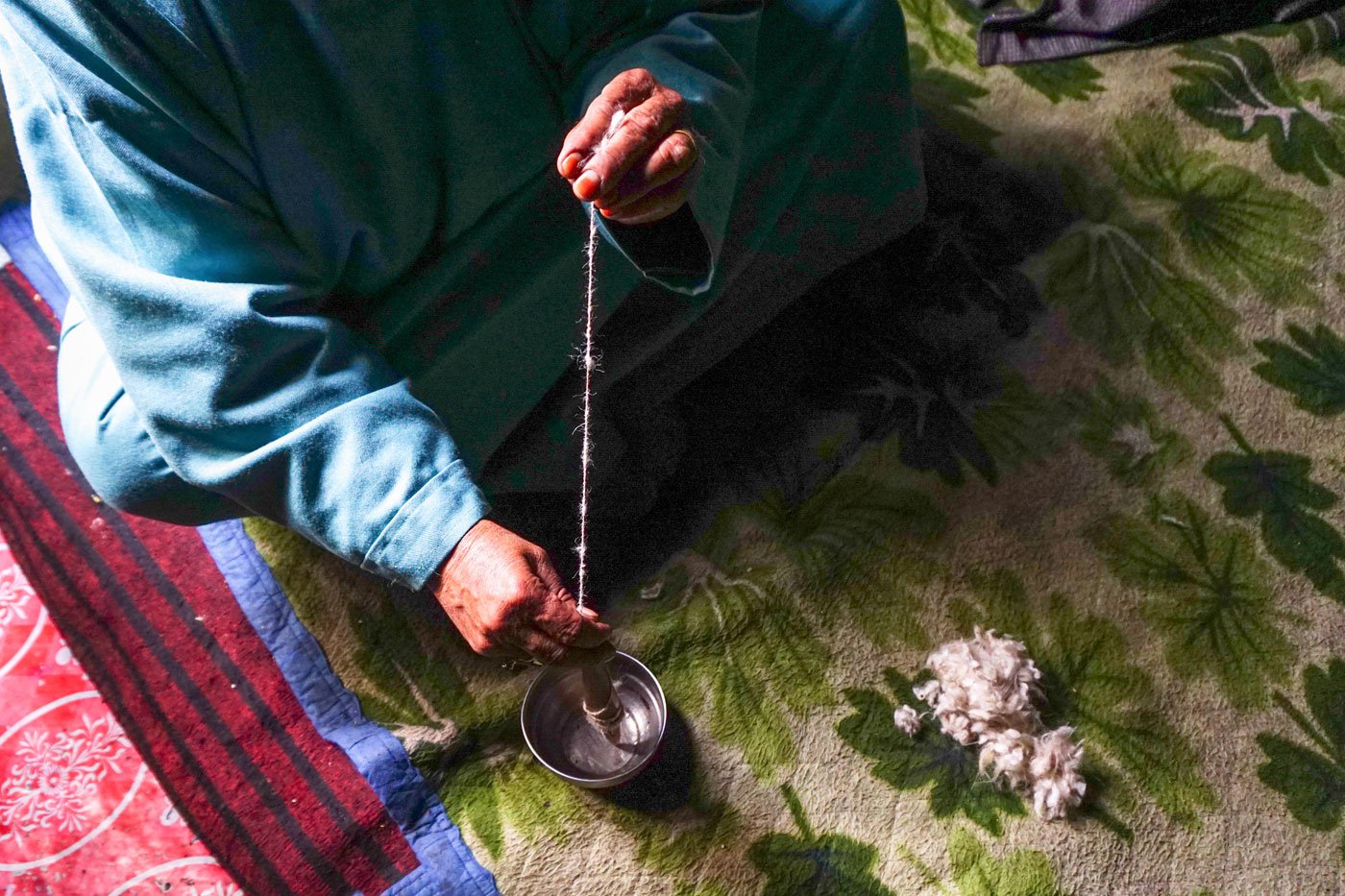
Zooni Begum demonstrates how a chakku is used to spin loose wool into thread
*****
Around 40 kilometres east of Dawar in Baduab village lives weaver Anwar Lone who is now in his nineties. Laying out a pattu blanket he made 15 years ago he says, “I used to start my work at eight and finish it at four in the evening. Later as I grew old, I was able to weave for just three to four hours.” It would take Anwar roughly an entire day’s work to weave a metre of fabric.
Anwar started selling pattu around four decades ago. “My business thrived because of the demand at both the local level and outside of Gurez. I have sold pattu to many foreigners visiting Gurez.”
In Achura Chowrwan (or Shah Pora) village, many have left the pattu business but siblings Ghulam Qadir Lone, 70, and Abdul Qadir Lone, 71, still carry on the practice with zeal. Even in peak winter when the valley is cut off from the rest of Kashmir and most families migrate down, the brothers choose to stay and weave.
“I cannot recall the exact age I started weaving but I was very young,” says Ghulam. “We used to make a lot of things in weaves like charkhana and chashm-e-bulbul .”
The charkhana is a chequered pattern whereas the chashm-e-bulbul is an intricate weave said to resemble the eye of a bulbul bird. Crafted with care, these pattu weaves are rougher than machine-made fabric.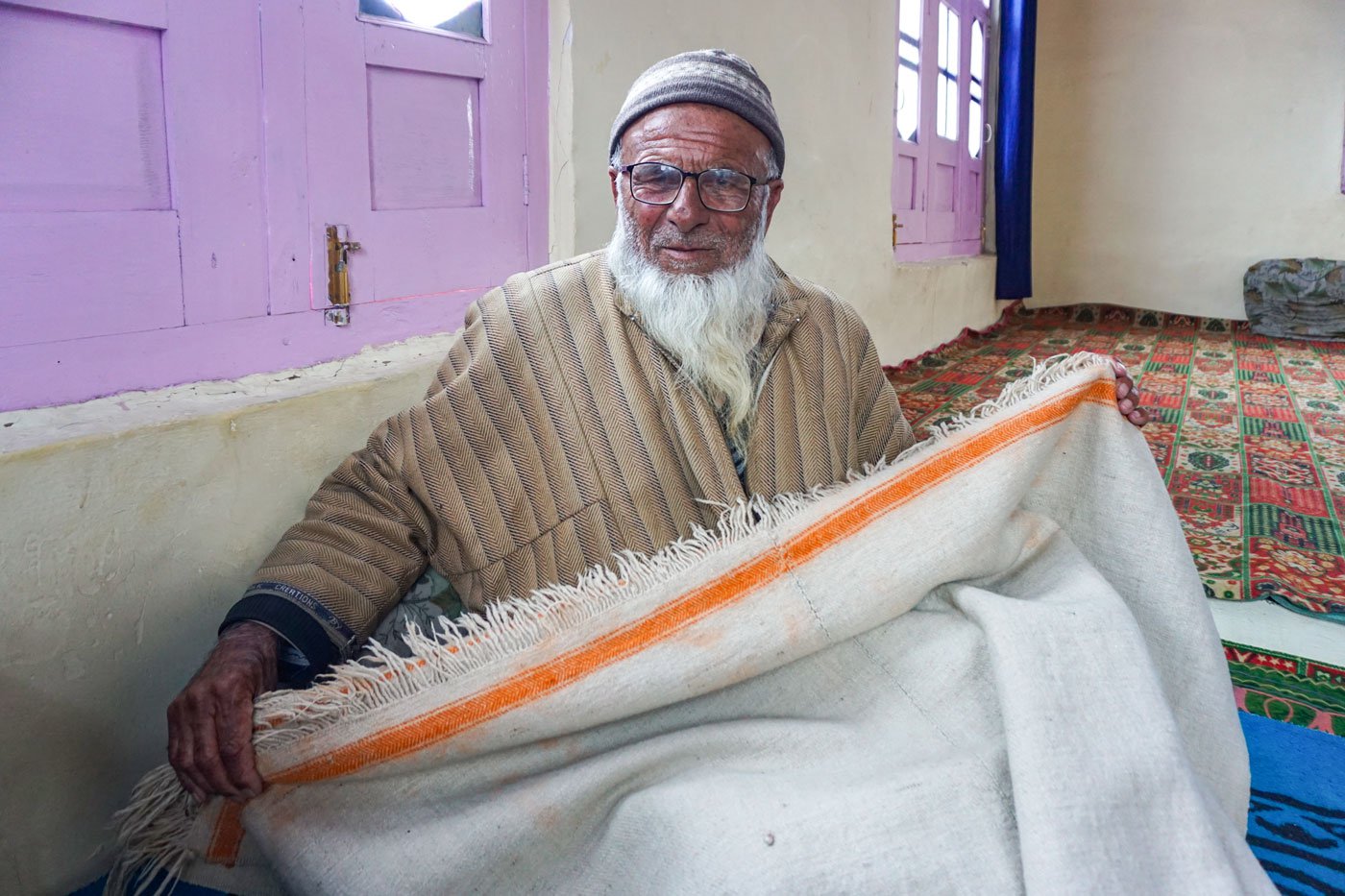
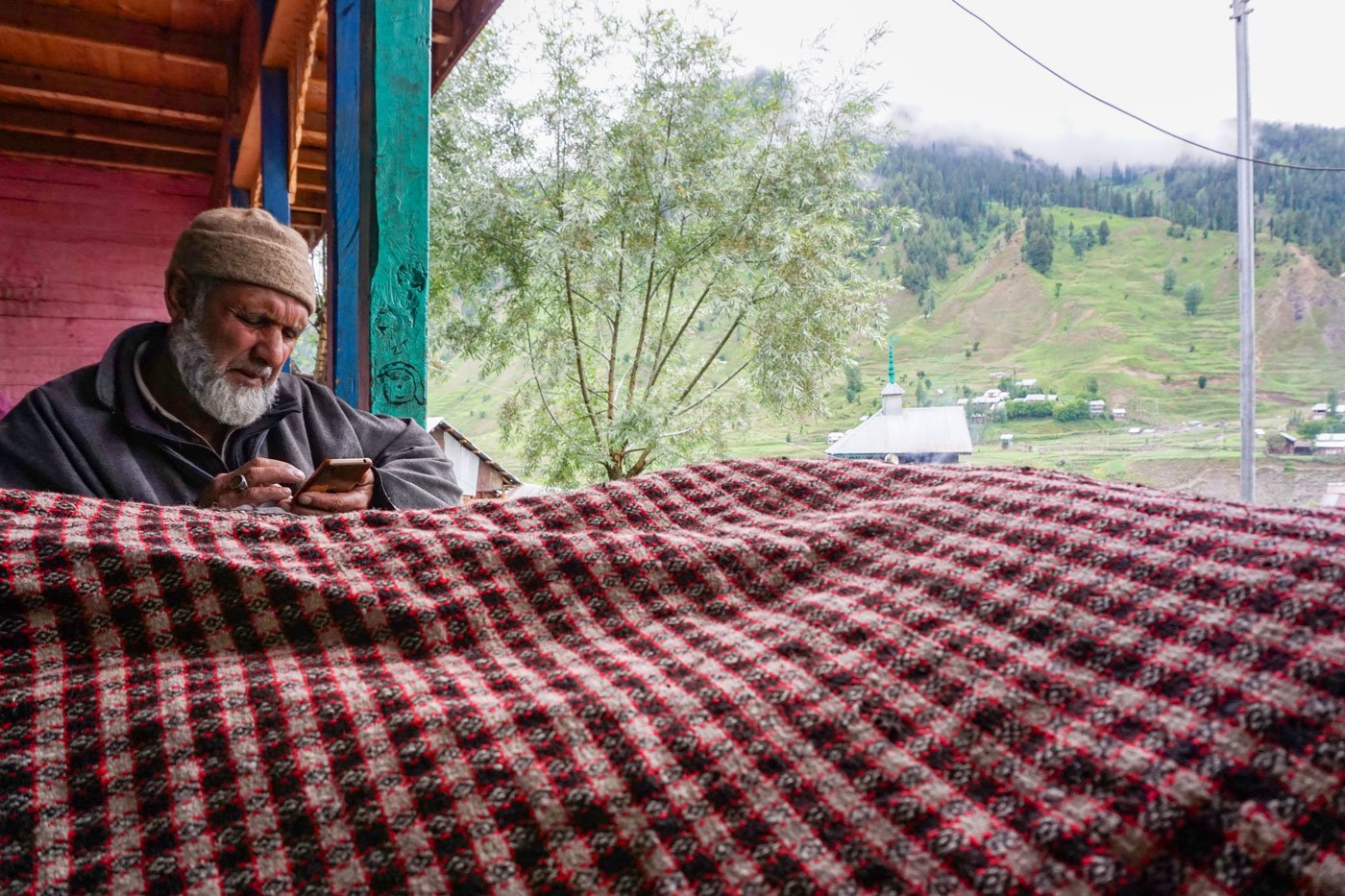
Left: Anwar Lone showing the woven blanket he made 15 years ago. Right: Abdul Qadir with a charkhana patterned fabric
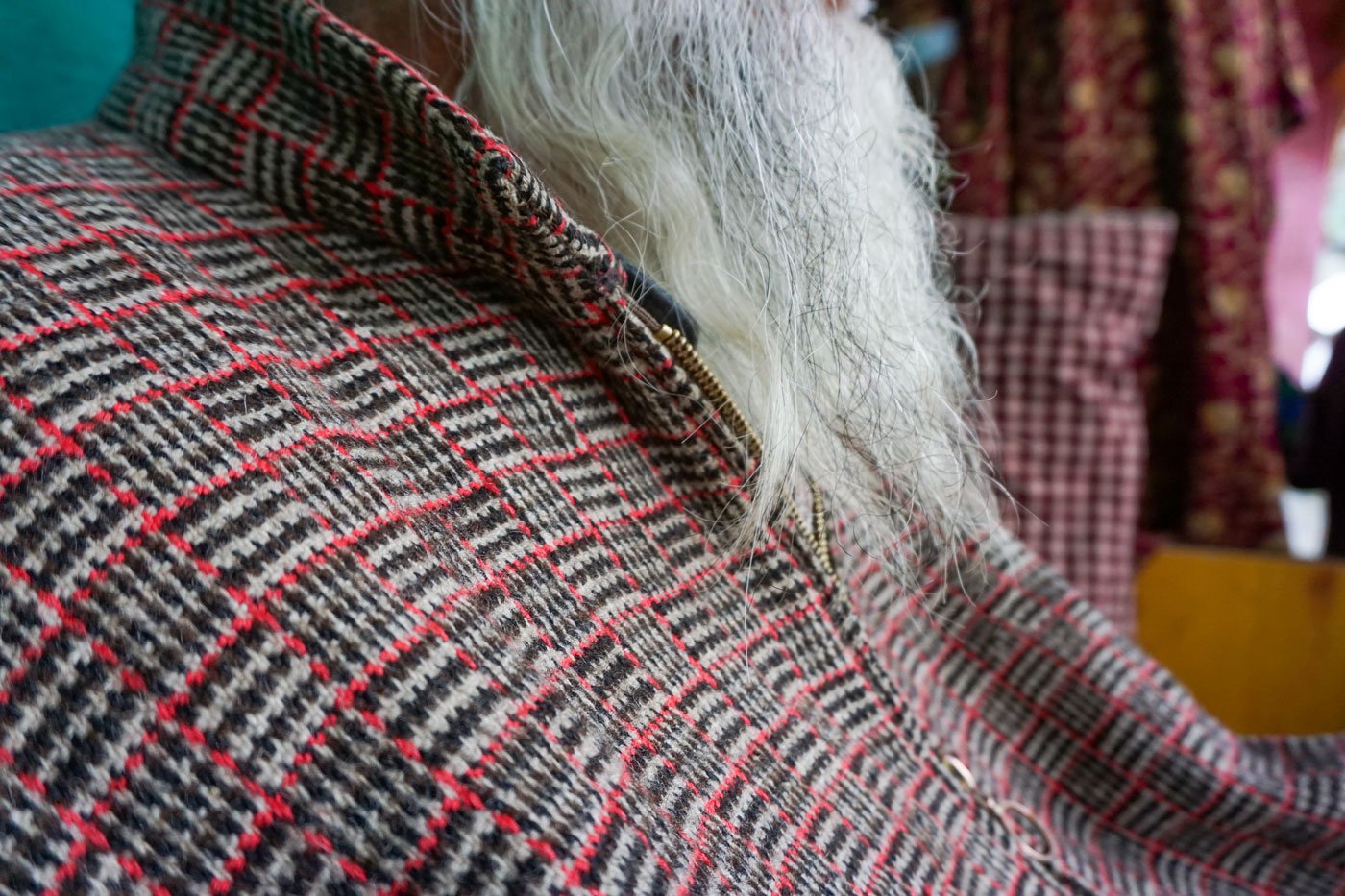
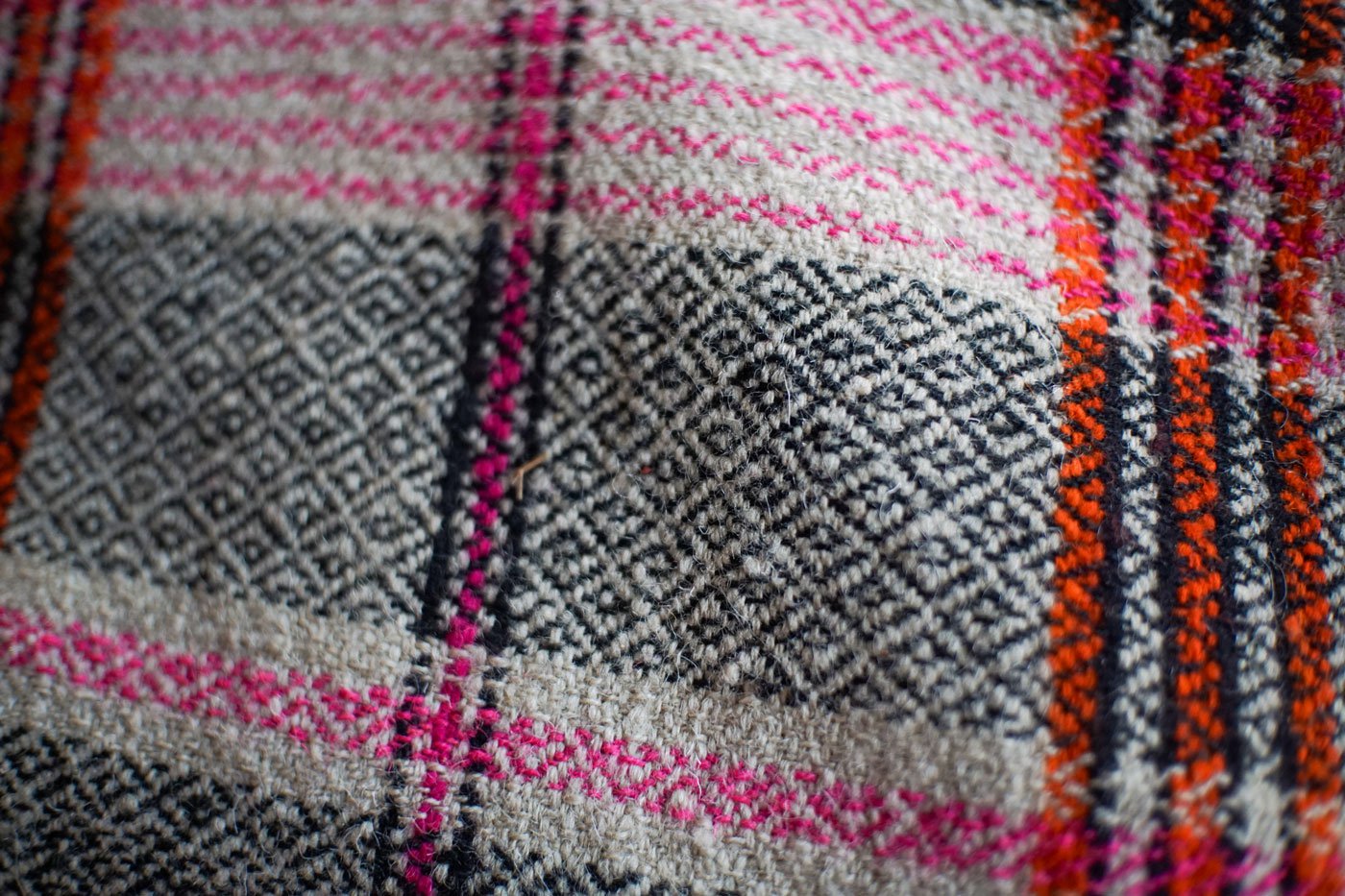
Left: Ghulam Qadir wears a charkhana patterned pheran, a gown-like upper garment. Right: The intricate chashm-e-bulbul weave is said to resemble the eye of a bulbul bird. It is usually used to make blankets
“ Waqt ke saath pahnaave ka hisaab bhi badal gaya [Clothing fashions have changed over time],” says Ghulam. “But pattu is the same as it was 30 years ago.” The brothers say they hardly make a profit these days, selling to locals who shop maybe once a year.
Abdul Qadir says young people lack the vigour and patience needed to learn the craft. “I believe in the next 10 years pattu will cease to exist,” rues Abdul. “It needs new hope and innovation which can only happen through timely intervention by the government,” he says.
Abdul Kumar's son Rehman, who runs a grocery store in Dawar market, says weaving is no longer a viable option. “The effort outstrips the profit,” he says. “People have several ways of earning now. Pehle ya toh pattu tha ya zameendari [Earlier, it was either pattu or land ownership].”
Gurez is a remote, border area and hardly receives attention from the authorities. But the weavers say new ideas may ignite new life into this dying art and make it once again a stable source of income for the people of the region.